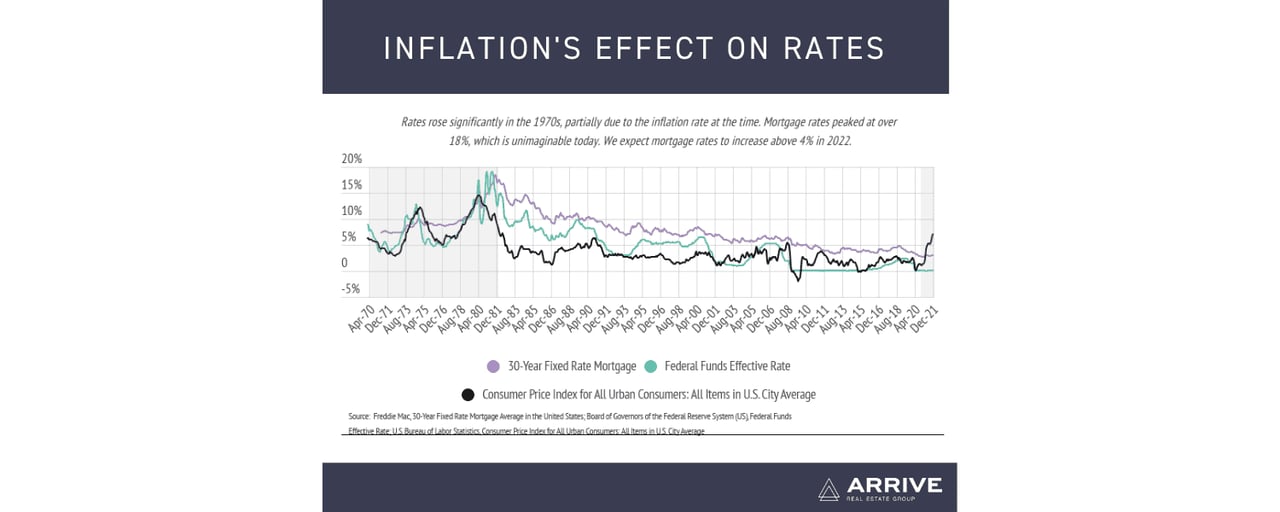Welcome to our February newsletter, where we’ll explore residential real estate trends in the East Bay and across the nation. We remain committed to providing you with the most current market information so you feel supported and informed in your buying and selling decisions. This month, we examine how mortgage rate increases are definite and examine the local market.
The Fed Dual Mandate
The Federal Reserve recently indicated that it would raise the federal funds rate as soon as March for the first time in over three years. The Fed uses interest rates in particular as a tool to meet its dual mandate of maximum employment and price stability. Employment and price stability are long-term indicators for home prices.
Employment rebounded considerably to pre-pandemic levels by December 2021. High unemployment rates for extended periods lead to less overall wealth where fewer people buy homes, and more people experience foreclosures, thereby lowering home prices. If we view the current record-high 10.5 million job openings, along with the nearly 10 million new businesses created over the past two years, we can see employment is back on solid ground. Simply put, people are working, and that is good for individual wealth and the larger economy.
Rising mortgage rates could help curb inflation and create a more balanced housing market (although 2022 will surely be a sellers’ market). The downside is it will make homes more expensive monthly, hitting first-time homebuyers the hardest. With the federal funds rate at 0% and inflation at a near-40-year high, rate hikes are expected to combat inflation. Essentially, when the cost to borrow increases, fewer people want to borrow, leading to less consumer spending (less demand), which lowers prices. While we wish that we could always be in periods of high employment, low inflation, and low interest rates, as we experienced for nearly a decade before the pandemic, we must recognize the atypical nature of that period.
As we enter this new chapter of rising mortgage rates, we don’t expect home prices to change significantly, if at all, because supply is still such a driving factor. In December 2021, there were 57% fewer homes on the market than in December 2019. The low supply means that demand can decline without affecting prices. Does it matter if 10 offers drop to five? Probably not, and it might even create a better market. Sellers tend to become buyers, so unless you’re a first-time homebuyer, you’ll likely experience both sides of the market.
We don’t expect price appreciation to see the record gains we experienced over the past two years, but we do expect home prices to increase. Another factor at play over the past two years was a sharp increase in disposable income, which has now normalized. People had more money to spend over the past two years, and we saw that throughout markets: The housing market, the stock market, cryptos, art, jewelry, etc. all reached record high prices. As disposable income has dropped to a more normal level, we can expect assets to appreciate at a more normal pace.
The Local Lowdown
Year-over-year, prices are still higher than last year. Alameda County is up 16% while Contra Costa is up 9%. The housing market in the East Bay, however, has a major advantage in that a large number of people simply want to live here, which has reduced inventory to record lows. Homes are selling quickly as buyers compete over the limited inventory with average sales prices between 4-10% above list price.
Rising interest rates, which will hopefully curb the still-rising inflation, will make homes less affordable and dampen demand. But inventory is so low in the East Bay that even with less demand, the market will still likely be undersupplied. It might seem counterintuitive that home prices will appreciate after increasing so much over the past two years, but with inventory at record lows, home prices in 2022 will likely increase — though at a slower rate than we saw in the first half of 2021.
In Summary
We entered 2022 with historically low inventory. The sustained high demand and lack of new listings over the past year brought supply to record lows across markets. We are seeing that far more people want to live in the East Bay than want to leave. Sales have been incredibly high, especially when accounting for available supply, again highlighting demand in the area. Sellers can expect multiple offers, and buyers should come with competitive offers. The high demand we’ve seen over the past year might wane as interest rates increase; however, the supply is so low that the market can handle a drop in demand.
As always,
Arrive Real Estate Group remains committed to helping our clients achieve their current and future real estate goals. Our team of experienced professionals are happy to discuss the information we’ve shared in this newsletter. We welcome you to
contact us with any questions about the current market or to request an evaluation of your home.

